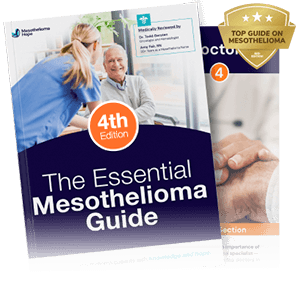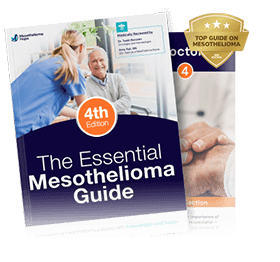For decades, researchers have known mesothelioma is caused by asbestos, a dangerous cancer-causing mineral. However, the specifics of how asbestos fibers lay dormant for years before causing symptoms have been more of a mystery.
Now, it appears the protein known as HMGB1 is a main factor in the development of mesothelioma cancer after asbestos exposure, based on a recent study led by University of Hawai‘i Cancer Center researchers Dr. Haining Yang and Dr. Michele Carbone.
These findings on the role of HMGB1 in the response to asbestos could have a big impact on future research into mesothelioma prevention and treatments in the early stages of this cancer.
How Does HMGB1 Affect Mesothelioma Development?
For years, researchers have known that HMGB1, a type of protein that influences inflammatory immune responses, serves as potential early indicators of mesothelioma.
However, this study reveals that HMGB1 is released from mesothelial cells (the cells that make up the mesothelium, or the thin lining of sensitive organs) and has a link to mesothelioma onset (tumor growth).
Essentially, HMGB1 is released from mesothelial cells after asbestos exposure. Once released, HMGB1 tells other cells to release another protein called TNF-α (Tumor Necrosis Factor – Alpha). Together, these proteins trigger long-lasting inflammation in the body.
This inflammation, over time, makes it easy for mesothelioma to develop and grow.
What Does New HMGB1 Research Mean for Mesothelioma Patients?
Studying the role of HMGB1 proteins, which cells release the protein, and how they affect mesothelioma growth could prompt widespread changes to the field of mesothelioma treatment and prevention.
This study could move research forward and give hope to patients by unveiling a new focus for mesothelioma targeted therapy, which uses drugs to treat specific genes and proteins that influence cancer cell growth.
By understanding how HMGB1 proteins influence tumor growth, researchers can now pursue targeted therapies to prevent HMGB1 release after asbestos exposure. This could potentially stop the growth of mesothelioma tumors completely or slow the spread of the cancer.
In turn, new targeted therapies could help interfere with mesothelioma growth in earlier stages or prevent mesothelioma development in people who’ve already been exposed to asbestos from developing this cancer.
Ultimately, this research is the start of even more understanding of the cellular behavior of mesothelioma, helping doctors choose the best treatment options.
What Happens Next in HMGB1 and Mesothelioma Research?
Now that researchers have traced the origins of HMGB1 to mesothelial cells after asbestos exposure, they will continue to research ways to hinder the release of this protein.
“We are very encouraged by these results, and we hope to develop more effective preventive and therapeutic strategies for those people at risk of developing mesothelioma because they have been exposed to asbestos,” Dr. Yang told University of Hawai‘i News.
For people with a history of asbestos exposure, this could mean identifying the risks of mesothelioma earlier, recognizing the need for preventative measures or early screening, and developing better treatment options.
However, more clinical trials are needed to make final conclusions about the potential of this new research.
Find Top Mesothelioma Treatment Near You
If you or a loved one are facing a mesothelioma diagnosis, know that help is available and researchers are working every day to find better ways to prevent and treat this rare cancer.
Some targeted therapy clinical trials are already exploring similar methods to treat mesothelioma. If you or a loved one are facing a mesothelioma diagnosis, our team may be able to help you find active clinical trials in your area.
At Mesothelioma Hope, we provide support, resources, and access to the best treatments. Contact us at (866) 608-8933 now to connect with a Patient Advocate or get our Free Mesothelioma Guide shipped overnight to learn more.











